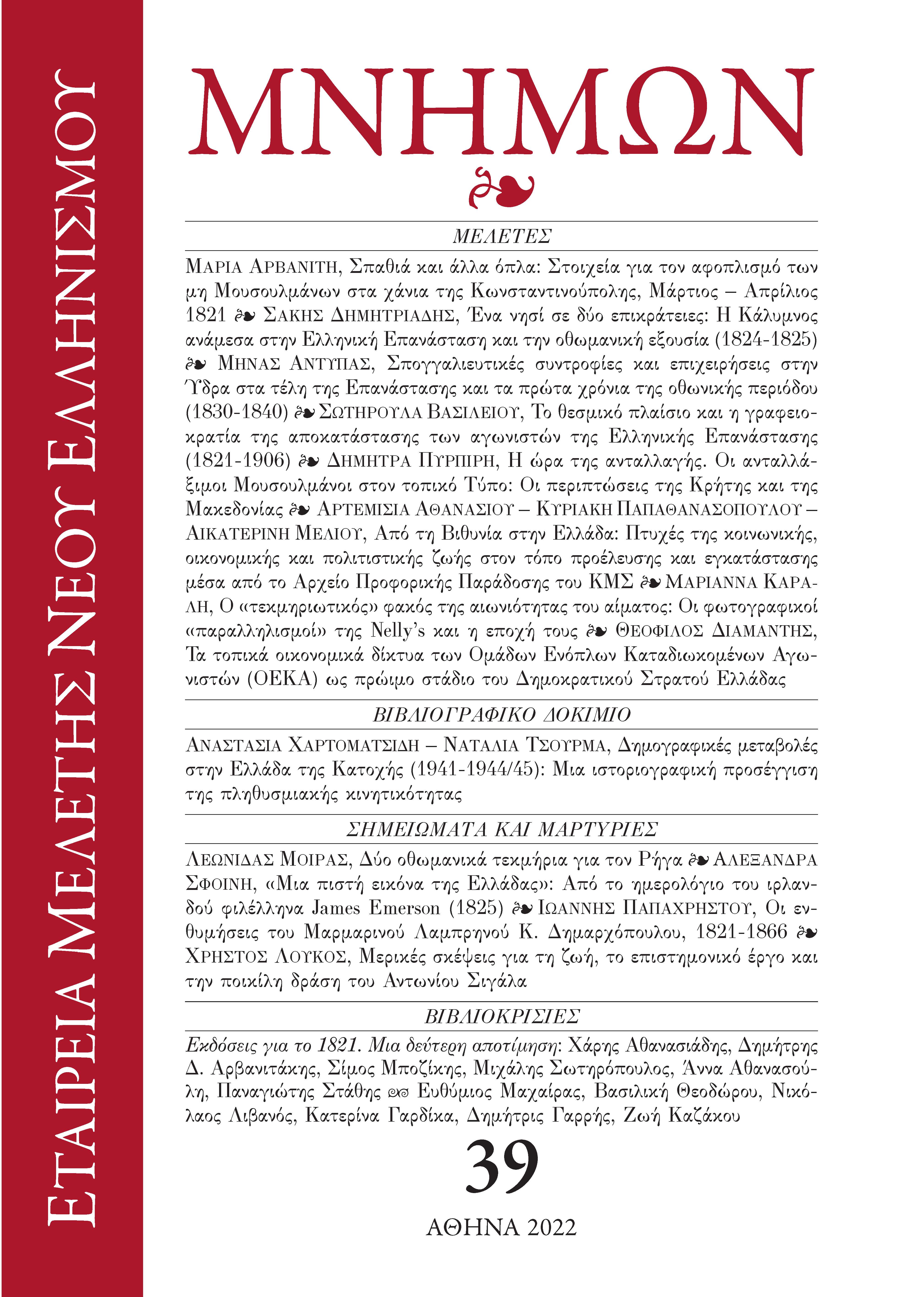THE INSTITUTIONAL FRAMEWORK AND THE BUREAUCRACY OF THE REHABILITATION OF THE FIGHTERS OF THE GREEK REVOLUTION, 1821-1906

Abstract
What were the legislative commitments and decisions regarding the re¬habilitation of the contributors of the Greek Revolution? Which moral and material rewards did the Greek state reserve for warriors, politicians, ‘‘internal creditors’’ and war-affected individuals?
This article focuses on the bureaucracy of the rehabilitation of the liberators of Greece, from the beginning of the revolution until the dawn of the 20th century. It presents the diversity of the fighters' claims and respectively their rewards (medals, military and political offices, appoint¬ments, compensations, lands, pensions, political rights), the work of the evaluation committees and also the interaction between veterans’ demands, socio-economic circumstances and governmental practices.
The article first of all, outlines the institutional framework, on which the rehabilitation of the fighters was based. Next, it examines three crucial episodes of the whole process: the establishment of aristeion (commemora¬tive medal, 1834) and the evolution of its awards until December 1836, the National Assembly’s (1843-1844) resolutions regarding the veterans and their implementation, and finally, the work of the last Struggle Com¬mittee (1865-1877).
The primary sources for this article include the relevant 19th centu¬ry legislation, the Archive of Aristeia (General State Archives, 1833- 1865), the Archive of the Fighters (National Library of Greece, 1865- 1877) and the Greek Press (1828-1877).
Article Details
- How to Cite
-
VASILEIOU, S. (2024). THE INSTITUTIONAL FRAMEWORK AND THE BUREAUCRACY OF THE REHABILITATION OF THE FIGHTERS OF THE GREEK REVOLUTION, 1821-1906. Mnimon, 39, 87–111. https://doi.org/10.12681/mnimon.37410
- Issue
- Vol. 39 (2022): Mnimon
- Section
- ARTICLES

This work is licensed under a Creative Commons Attribution-NonCommercial-ShareAlike 4.0 International License.
The copyright for articles in this journal is retained by the author(s), with first publication rights granted to the journal. By virtue of their appearance in this open access journal, articles are free to use (with the exception of the non-granted right to make derivative works) with proper attribution for non-commercial uses (licence Creative Commons 4.0). EKT/NHRF retains the worldwide right to reproduce, display, distribute, and use articles published in Mnimon in all formats and media, either separately or as part of collective works for the full term of copyright. This includes but is not limited to the right to publish articles in an issue of the Journal, copy and distribute individual reprints of the articles, authorize reproduction of articles in their entirety in another EKT/NHRF publication, and authorize reproduction and distribution of articles or abstracts thereof by means of computerized retrieval systems.

